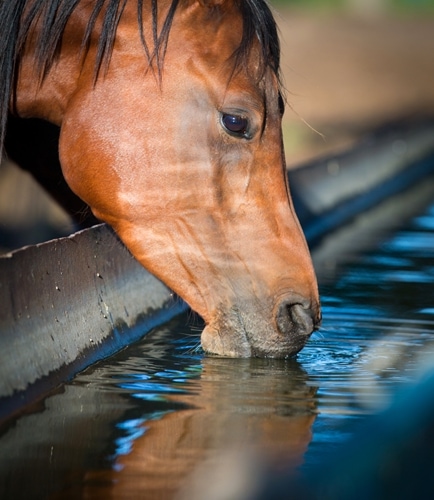While the summer heat can often be intense enough to drain anyone, horses are especially prone to a variety of hazardous symptoms when enduring warm temperatures. This is why trainers always need to keep an eye out for any potential signs that could indicate their horse is suffering from heat exhaustion. Knowing how high temperatures affect a horse’s health is essential to understand how important keeping it cool during the summer is. One study has illustrated how a horse’s body can significantly change when constantly exposed to excess heat.
Researcher finds horses feel heat 10 times faster than humans
Dr. Michael Lindinger, a professor and animal physiologist at the University of Guelph, led a study that analyzed how quickly a horse feels heat, as well as how the warmth affects its body. According to Lindinger’s estimates, horses can begin to feel the side effects of heat 10 times quicker than humans, meaning long rides under the summer sun could affect your animal more than you realize.
One of the main reasons for this has to do with how horses use a significantly high percentage of active muscles whenever they engage in physical activity. When these muscles are being used for training, they will naturally produce heat. This, on top of already higher temperatures, can quickly lead to muscle exhaustion, which is why adequate hydration is essential for maintaining its performance levels.
Another factor that plays into how quickly horses feel heat has to do with how much sweat they need to produce to effectively keep cool. According to Lindinger’s findings, horses can produce anywhere between 15 to 20 liters in one hour in cool, dry conditions. This amount increases up to 30 liters when experiencing increased humidity and temperatures, except increased evaporation in the heat means that only around 30 percent of the sweat produced effectively cools down the horse.
Lindinger elaborated on how long it actually takes for horses to feel the devastating effects of the heat.
“It only takes 17 minutes of moderate intensity exercise in hot, humid weather to raise a horse’s temperature to dangerous levels,” Lindinger said in a statement. “Because so much more sweat is produced than can be evaporated, the rest just drips off the horse’s body. By comparison, up to 50 per cent of the sweat people produce is evaporated from our bodies during exercise and helps to cool us.”
More than water for effective hydration
Lindinger also analyzed effective ways of hydrating your horse during high temperatures. The salt present in a horse’s sweat is four times more concentrated than human sweat. This means it takes more than supplying your horse with access to fresh, cold water to keep it hydrated. Lindinger recommended using a combination of water along with an electrolyte solution that has higher salt quantities to replace the salt lost while sweating. Trainers can consider using Finish Line’s Electrocharge™, which comes in an oral syringe that features a healthy combination of electrolytes as well as trace mineral salts.
Tips for keeping horses cool
In addition to always having access to cold water around the stable or fields, there are a few other essential tips to ensure your horses stay nice and cool during the summer heat. An easy one to incorporate is training your horse during the cooler parts of the day, such as early morning or just before dusk, when temperatures are not at peak levels. Any time you finish a ride or training session, make sure to hose your horse down, or sponge it with cold water along its lower body. Always inspect your horse’s stable conditions. If you notice that you start to sweat after a few minutes of being inside, it probably means it’s even harder for your horse to endure these conditions. Set up a few fans that are out of reach of the horses, which can make a world of difference in coolness.








